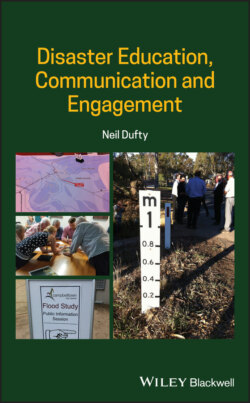Читать книгу Disaster Education, Communication and Engagement - Neil Dufty - Страница 23
2.3.2 Crowdsourcing
ОглавлениеPublic participation in gathering scientific observation about the world is not a new phenomenon. Following the devastating Lisbon earthquake of 1755, volunteers from all over Europe reported their experiences to help researchers create an early version of a ‘shake map’ that estimated the extent and intensity of the event (Coen 2012).
The term ‘crowdsourcing’ was coined in 2006 by journalist Jeff Howe to describe the ways in which the internet and mobile phones are facilitating the outsourcing to the public of tasks traditionally reserved for experts (Howe 2006).
Crowdsourcing can be described as the phenomenon where large groups of people (‘the crowd’) are used as the primary source of required services or content, typically on a voluntary basis and sometimes using internet-based channels. According to Holley (2010), ‘crowdsourcing uses social engagement techniques to help a group of people achieve a shared, usually significant, and large goal by working collaboratively together as a group’.
Disasters are prime examples of situations where the collective capacity of the crowd can make a difference. If properly organised, the crowd can bring direly needed extra capacities to professionals and help accelerate the disaster recovery process. Also, crowdsourcing platforms help to bridge collaboration and information gaps between the various communities that play a role in disaster management (Neef et al. 2013).
Crowdsourcing can also be used prior to a disaster in community risk awareness and participation in risk mitigation and preparedness activities. ‘An important reason to consider including crowdsourcing in risk assessment is that in addition to providing information, participants are themselves learning about risk in their area. Crowdsourcing thus becomes an avenue for risk communication through outreach and sensitization. Through involving new participants in the process, crowdsourced approaches also create opportunities to make risk assessment more inclusive. This can both improve the quality of the risk assessment through including local knowledge and raise public confidence in the results through increased understanding and ownership of the results’ (Soden 2017).
